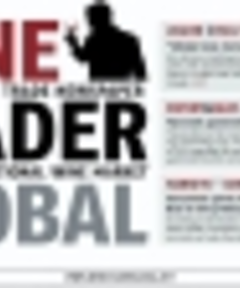Wine Leader Global - March 2012
Consumer have demonstrated a high sensitivity to price
In Germany, for example, 2010 sales dropped by only 0,7 percent whereas spending on wine decreased by 2,7 percent. “one major reasor for declining sales is that special deals for wine offered by grocery retailers have become more prevalent. Taking discounters into account as well, thos amounts to 54 percent of total turnover in the German wine market. Add to this that foreign suppliers have shown great price aggressiveness, and consumers have demonstrated a high sensitivity to proce,”explains Monika Reule, Head of the German Wine Institute. Instead of brands or premium products, consumers increasingly took advantage of special offers – a behaviour also observed among consumers in the UK. When perusing the aisles of the supermarket, Britons are being targeted mainly with special offers. About 55 percent of Britons who drink their wine at home purchase only discounted products. This was discovered by Mintel, a specialised international market research firm.
In order to secure a market share among food retailers, discounters or the food service industry, it may be worthwile for wine producers to examine closely the various cost factors. One important “dial” affecting prices is the type of bottling. “the lower the weight and volume of product, the cheaper is it to transport it. The savings can be passed on to consumers in the form of attractive pricing”, explains Christian Machers, an expert in beverage marketing at the point of sale. To reduce weight, wine manufactures have done things like designing new wine bottles that are up to 20 percent lighter than conventional bottles. “Particularly wine lovers who prefer classic bottling types are reaching for the lightweight bottles,” Christian Machers told us.
However, according to him, the future of the wine bottling – particularly for the export to boom countries like China and India – will be dominated by bag-in-box filling. Instead of transporting a pallet that holds 450 litres of bottled wine, 720 litres of bag-in-box wine fit on a single pallet. This amounts to a volume increase of 60 percent. Simply put, more wine can be transported for the same price.
Good and affordable wines for export
Many wines are filled bag-in-box, especially in the regions of Scandinavia and the Baltic States, southern Europe and Australkia / New Zealand, South Africa and North America for domestic consumption as well as for the food serve industry. The global share in 2009 was already more than ten percent. Even Germany, a more conservative wine country, is showing increasing acceptance for alternative bottling types, explains Christian Machers: “Using bag-in-box systems, retailers are in a position to offer increasingly price-conscious customers quality products at a lower price. The same applies to the restaurateurs, who are saving a great deal of money by using alternative types of containers and providing their guests with quality wines by the glass at an affordable price.
Modern equipment such as bag-in-box refrigerators, which can be used to easily tap wine, makes the light packaging more attracticve.”
Christian Machers is convinced that the bag-in-box wine segment – if nothing else, in view of the booming Asian market – will experience a clear boost again in the coming years on an international level as well. The fact of the matter is that Asians prefer imported wines. And the distance from the classic European wine producing countries to China or Japan is great. “Low-cost, high-quality imported wines are making it possible to secure a key share of the highly competitive Asian market,” explains Machers. (jn/wlg)

